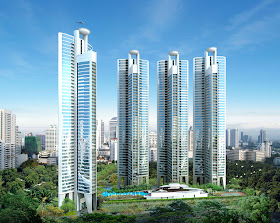 Hong Kong can nudge you out of your comfort zone but usually rewards you for it, so try the stinky beancurd, sample the shredded jellyfish, brave the hordes at the city centre horseracing and join in the dawn tai chi. Escape the city limits and other experiences await – watching the sun rise from a remote mountain peak, hiking surf-beaten beaches or exploring deserted islands.
Hong Kong can nudge you out of your comfort zone but usually rewards you for it, so try the stinky beancurd, sample the shredded jellyfish, brave the hordes at the city centre horseracing and join in the dawn tai chi. Escape the city limits and other experiences await – watching the sun rise from a remote mountain peak, hiking surf-beaten beaches or exploring deserted islands.Hong Kong's population has increased steadily over the past decade, reaching 7.097 million in 2010. Hong Kong is one of the most densely populated areas in the world, with an overall density of some 6,426 people per square kilometer. Cantonese, the official Chinese dialect in Hong Kong, is spoken by most of the population. English, also an official language, is widely understood and is spoken by more than one-third of the population. Every major religion is practiced freely in Hong Kong. All children are required by law to be in full-time education between the ages of 6 and 15. Starting in 2008, the Hong Kong Government expanded the length of free education it offers from 9 to 12 years. Preschool education for most children begins at age 3. Primary school begins normally at age 6 and lasts for 6 years. At about age 12, children progress to a 3-year course of junior secondary education; at age 15, they can choose to continue with 3-year senior secondary education or to join full-time vocational training. More than 90% of children complete upper secondary education or equivalent vocational education. In 2010, 301,200 students were enrolled in post-secondary education. Over 25.5% of the total population aged 15 and over have attended post-secondary educational institutions.
Hong Kong is one of the world's most open and dynamic economies. In 2010 Hong Kong’s real economic growth rate rose to 6.8%, recovering from the global financial turmoil. Inflation rose gradually to 2.4% in 2010 from 0.5% in 2009. The government introduced several rounds of measures to forestall the risk of a housing market bubble arising from the low interest rates and ample liquidity in the global financial system
Hong Kong
Hong Kong
Hong Kong
Hong Kong
Hong Kong

























